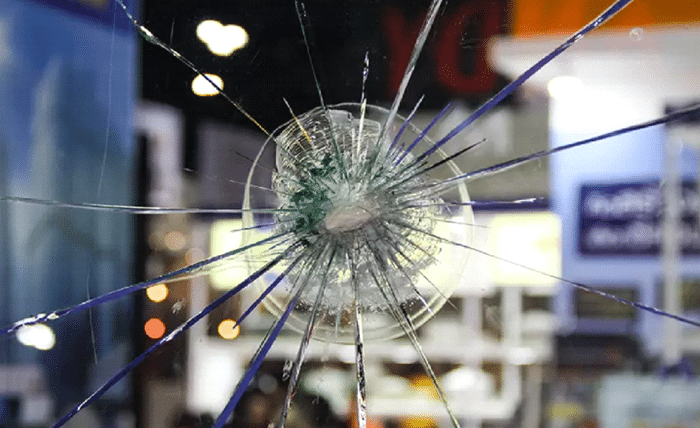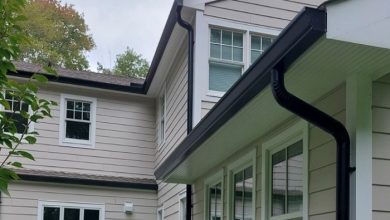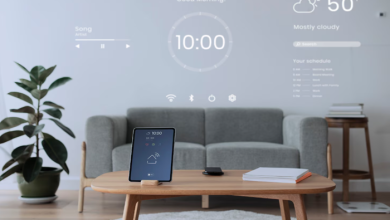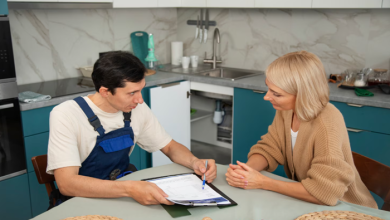
Traditional glass provides inadequate protection of people and assets as well as property. This is where the bullet resistant glass that is generally confused as the so-called bulletproof glass comes in. Innovative glazing solution is designed to absorb the energy of a bullet shot, and repel penetration; this is one of the essential components of modern safety engineering. Bullet resistant glass has become a necessity in designing a security system whether being applied to the banks, schools or secure cars.
This article will reveal about how bullet proof glass works, what materials are used to make it, how it is categorized and what kinds of bullet resistant glass are appropriate for various uses. This breakdown will give you the black and white you need when you are new in the world of secure glass.
Definition and Function of Bullet Resistant Glass?
Bullet resistant glass is a multilayered glazing which is designed to absorb ballistic gunshot. Although people use the term bulletproof to describe it, no glass is completely perfect. The correct name is bullet resistant since it is not bulletproof as it can stop bullets or prevent bullet penetration and redirect bullet energy.
Common Applications
- Banks and financial institutions
- Government buildings
- Police stations and military facilities
- Schools and universities
- Convenience stores and gas stations
- Luxury vehicles and armored trucks
- Residential panic rooms
How Does Bullet Resistant Glass Work?
- Energy Absorption and Dispersion
Bullet resistant glass is a system of slowing down and flattening bullets by repeated layers of materials which absorb kinetic energy. This glazing is referred to as safety glazing because when compared to regular glass, it does not shatter into shards when it is hit by an impact affecting it.
- Layer Composition
A standard bullet resistant panel may consist of:
- Annealed or tempered glass: Adds hardness and surface rigidity.
- Polycarbonate: A transparent thermoplastic that provides flexibility and energy dispersion.
- PVB (Polyvinyl Butyral) or SGP (SentryGlas Plus): Laminating interlayers that bond glass and polycarbonate.
- Glass-Clad Polycarbonate (GCP): An advanced composite combining glass and polycarbonate layers for greater strength and optical clarity.
Bulletproof vs. Bullet Resistant
It’s important to note the terminological distinction:
- Bulletproof glass implies total impenetrability, an unrealistic claim.
- Bullet resistant glass acknowledges the graded levels of protection, offering resistance based on weapon type, caliber, and impact energy.
Security professionals, architects, and safety engineers use “bullet resistant” to align with industry standards like UL 752, NIJ 0108.01, and EN 1063.
Levels of Bullet Resistant Glass (UL 752 Standards)
The UL 752 standard categorizes bullet resistant glass into eight protection levels, ranging from low-caliber handguns to high-powered rifles.
| Level | Firearm Type | Caliber | Typical Use |
| Level 1 | Small Handgun | 9mm | Retail counters, reception areas |
| Level 2 | Medium Handgun | .357 Magnum | Banks, cashier booths |
| Level 3 | Heavy Handgun | .44 Magnum | Law enforcement offices |
| Level 4 | Rifle | .30-06 | Military and government buildings |
| Level 5-8 | Assault Rifles and Armor-Piercing | 7.62mm+ | Military installations, embassies |
Each level is tested under strict laboratory conditions, including multiple shots at close range to assess spall, penetration, and overall integrity.
Types of Bullet Resistant Glass
All of the ballistic glazing materials available vary in performance capabilities, weight benefits and costs. A breakdown is here:
- Laminated Glass
Constructed using the fusion together of two or even more pieces of glass using PVB or SGP interlayers. It is heavier, and has a great optical clarity and resistance to delamination.
- Polycarbonate Laminate
Deposits various layers of polycarbonate coated with urethane or other glues. The profile of this part is lightweight and flexible, which makes it great to use where there is need of having minimum weight possible (e.g. armored vehicles).
- Glass-Clad Polycarbonate (GCP)
A mixture of both worlds, a hybrid solution that offers the strength of the glass as well as the ruggedness of polycarbonate. It gives increased ballistics defense, better spall management, and has longer lasting service in impact situations.
- Acrylic Ballistic Panels
Simple, solid, sheet acrylic provides minimal bullet resistance (with level usually UL 1 or 2). They are inexpensive and they are widely found in low-threat retail settings.
Key Factors in Choosing Bullet Resistant Glass
- Threat Assessment
Your choice should begin with a threat-level analysis:
- What type of weapon is most likely?
- What distance will the attack occur from?
- Will the attacker fire multiple shots?
- Environmental Factors
- Outdoor vs. Indoor Use
- UV Resistance Requirements
- Temperature Variability and Humidity
- Weight Considerations
Thicker, higher-rated glass weighs more and may require reinforced framing, especially in vehicles or older buildings.
- Optical Requirements
High-visibility installations, like banks or control rooms, require glass with minimal distortion and color shift.
Safety Glazing Standards (UL, NIJ, and EN)
Understanding the global safety certification standards is vital:
- UL 752 (Underwriters Laboratories): The U.S. benchmark for bullet resistance.
- NIJ 0108.01: U.S. National Institute of Justice standard often used for law enforcement gear and infrastructure.
- EN 1063: The European classification for bullet resistant glazing.
Always ensure the glass is lab-tested and certified for your required protection level.
Where Is Bullet Resistant Glass Used in Real Life?
- Schools and Education Facilities
The rise in active shooter incidents has led many schools to retrofit entranceways and administrative offices with bullet resistant barriers.
- Government and Military Installations
Federal buildings, consulates, and data centers often install Level 4+ glass in entry points, watch stations, and bunkers.
- Retail and Commercial Spaces
Pharmacies, convenience stores, and cannabis dispensaries frequently use Level 1-3 glass for cashier windows and pass-through drawers.
- Personal Security and Residential Use
Celebrities, executives, and high-net-worth individuals install custom bullet resistant windows in panic rooms and home offices.
Benefits and Limitations of Bullet Resistant Glass
Pros
- Offers critical time for escape or defense.
- Can be installed in doors, windows, partitions, and vehicles.
- Available in low-spall designs to prevent internal glass scatter.
- Customizable thickness and aesthetic finish options.
Cons
- High cost, especially at UL 4+ levels.
- Increased weight may require structural upgrades.
- Not completely “bulletproof”, can fail under extreme conditions or sustained attack.
Maintenance and Longevity
- Lifespan
Most bullet resistant glass systems last 15–20 years, depending on UV exposure, humidity, and impact frequency.
- Inspection Tips
- Check for delamination or clouding.
- Inspect seals and framing for signs of water infiltration.
- Ensure manufacturer warranties remain valid.
Innovations in Bullet Resistant Glass Technology
The field of ballistic glazing is constantly evolving. Current R&D focuses include:
- Nanotechnology-infused polymers for enhanced energy absorption.
- Smart glass integration (e.g., switchable tinting + bullet resistance).
- Multi-threat glass, resistant to both bullets and forced entry tools or explosives.
- Recyclable ballistic glass to meet environmental sustainability targets.
Bullet Resistant Glass vs. Other Security Glazing Solutions
| Feature | Bullet Resistant Glass | Tempered Glass | Laminated Glass | Acrylic Panels |
| Firearm Resistance | Yes | No | Limited | (Low caliber) |
| Impact/Blunt Force | High | Moderate | High | Moderate |
| Spall Protection | Yes (with polycarbonate) | No | Yes | No |
| UV Resistance | Optional coatings | Yes | Yes | Yes |
| Weight | Heavy | Lightweight | Moderate | Lightweight |
Conclusion
The bullet resistant glass is not just for armored cars and government buildings anymore. Due to the increased security risks in both the private and the public sector, its use is fast trickling down to use in education, retail and home security. To make appropriate choices, it is important to learn how this advanced material functions, what protection grounds it has and how it cooperates with desktop architecture systems.
The polycarbonate laminates to the glass clad composites, the choices are diverse as well as the degree of threat. Although in no type of glazing system, complete safety can be guaranteed, bullet resistant glass is instrumental in purchasing several moments which may save several lives.
Whether you are considering designing or retrofitting a space in a security-oriented way, possessing the correct information about bullet resistant materials can considerably aid you in developing a better and safer place to stay in.




